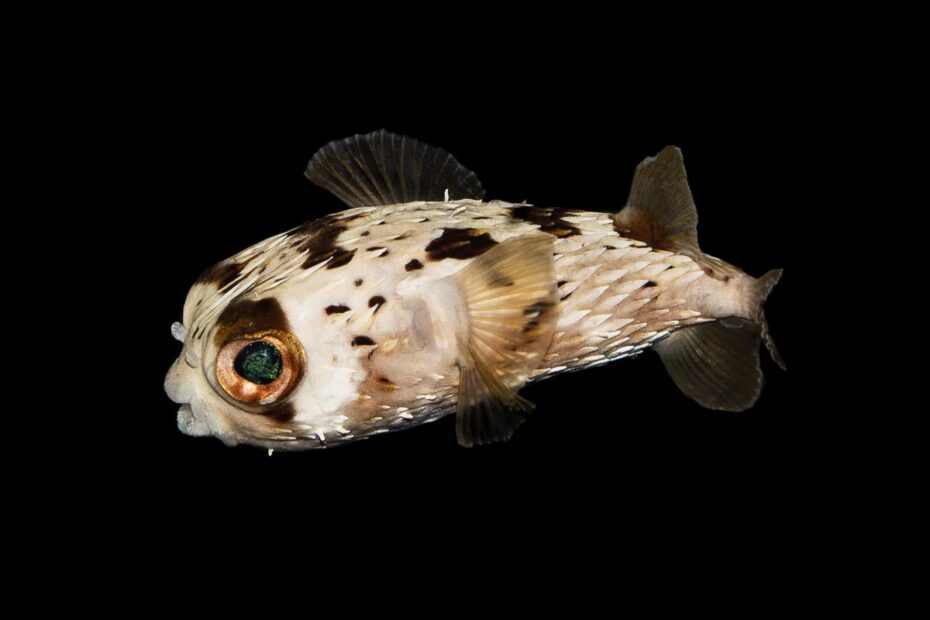The Porcupine Puffer, also known as the Porcupinefish (Diodon holocanthus), is a charismatic marine fish popular in the aquarium hobby due to its engaging personality and unique appearance. Here’s an overview of this species:
- Appearance: The Porcupine Puffer has a rounded body covered with long, sharp spines that stick out when the fish is threatened or agitated. When not inflated, these spines lay flat against the body. Its coloration is generally a beige or olive with dark spots covering its body. It has large, expressive eyes and a mouth that looks like a beak.
- Size: This species can grow quite large, often reaching lengths of up to 12 inches (30 cm) or more in captivity.
- Habitat: The Porcupine Puffer is found throughout the tropical waters of the Atlantic Ocean.
- Behavior: These fish are known for their curious and often bold nature. They can become the “pet dogs” of the aquarium world, often recognizing their caregivers and displaying interactive behaviors.
- Diet: They are primarily carnivorous, feeding on a variety of meaty foods like crabs, snails, and sea urchins in the wild. In captivity, they should be given a varied diet that includes krill, shrimp, squid, and clams. Their beak-like teeth grow continuously, so they require hard foods, such as shell-on shrimp or specialized puffer pellets, to help grind down their teeth.
- Aquarium Care:
- Tank Size: Due to their potential size and activity level, a minimum tank size of 180 gallons is recommended, but larger is always better.
- Compatibility: Generally, Porcupine Puffers are peaceful but can be curious nibblers. It’s best to avoid housing them with invertebrates or fish that they might see as food. They are not reef-safe.
- Environment: They appreciate a well-decorated tank with plenty of hiding spots and areas to explore.
- Special Considerations:
- Toxins: Like other puffers, Porcupine Puffers contain tetrodotoxin, a powerful toxin. It poses little risk to humans unless ingested.
- Inflation: While they can inflate their bodies as a defense mechanism, it’s essential to note that inflating with air (especially outside of water) can be harmful and stressful to the fish. Never provoke a puffer to inflate for entertainment.
- Water Quality: Puffers can be sensitive to water quality. Regular water changes, good filtration, and maintaining stable water parameters are crucial.
- Lifespan: With proper care, Porcupine Puffers can live for 10 years or more in captivity.
- Interesting Fact: When threatened, the Porcupine Puffer inflates by taking in water, making it appear much larger and displaying its sharp spines, which can deter potential predators.
If considering a Porcupine Puffer for your marine aquarium, it’s vital to provide the necessary care and environment to ensure its well-being. Their engaging personalities make them a delightful addition to suitable setups.

